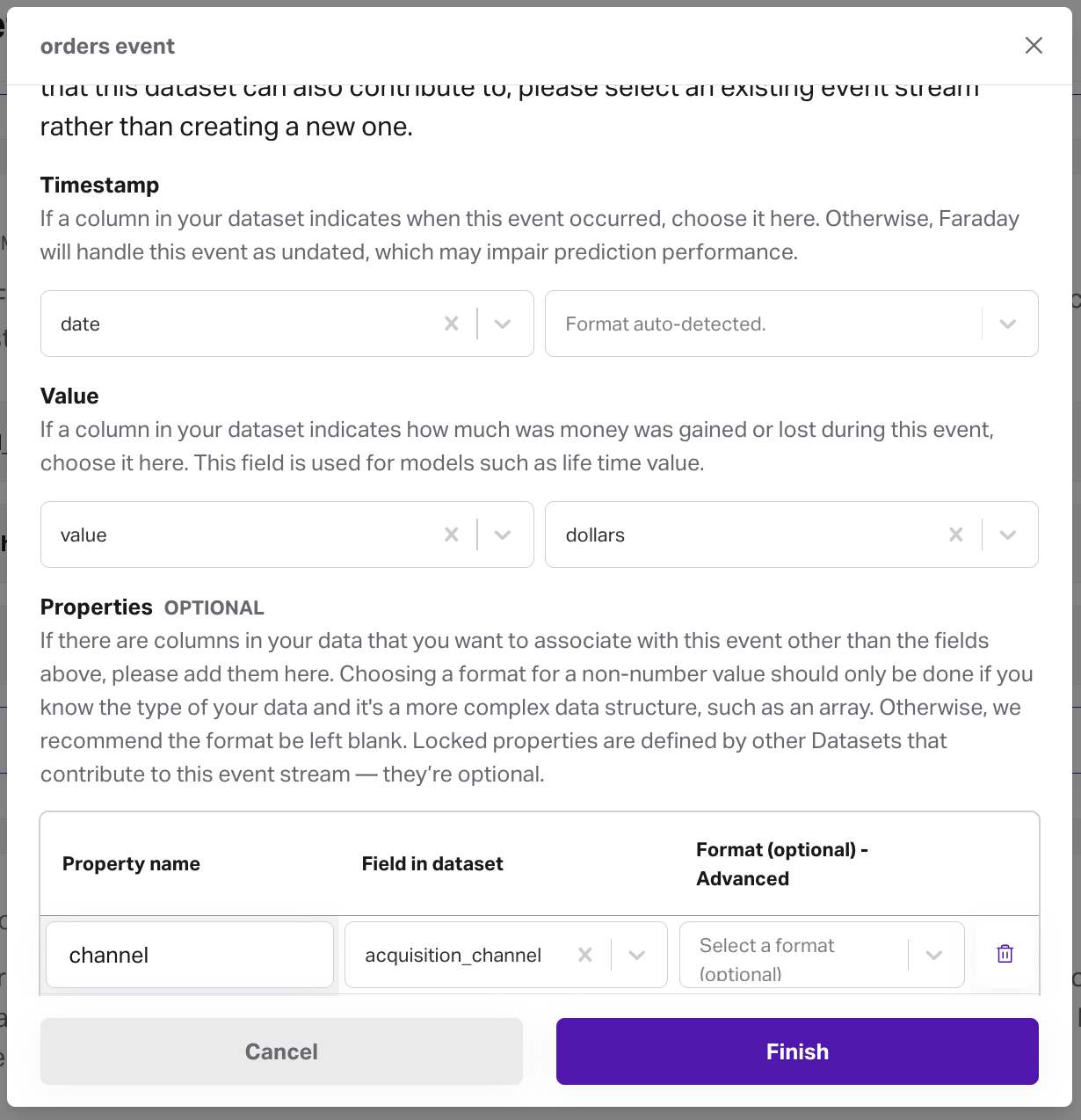How Faraday creates first-party features from your data
Faraday automatically engineers machine learning features based on your first-party data to be used as predictors.


What is a feature in machine learning?
In machine learning, a feature is a piece of data that’s used to train a predictive model. A feature can come in a variety of different formats, be it a static trait like age, whether or not someone’s a frequent home remodeler, or some value that’s related to the events taking place in your own data.
Once these features have been fed into the machine learning algorithms, predictive models begin learning from the data by looking for patterns to analyze, and the end result is predictions that help your business find your most likely-to-convert leads–and reject the least likely-to-convert ones–find more high-LTV customers, and more.
Creating first-party features from your data
Once your customer and lead data is ingested through a connection to your data warehouse or a CSV upload, you’ll point Faraday toward the events and traits within your data. While doing so, you’ll define when an event took place, its value, and any relevant event properties (e.g. the acquisition channel of the event).
Then, when you’re creating a prediction in Faraday, we’ll use these properties that you define to engineer features to be used alongside the Faraday Identity Graph’s 1500+ vivid traits. While analyzing the predictions you’ve created–like the likely-to-buy-again outcome below–you’ll find your first-party features with a sparkle next to them.
In the above example, a first-party feature was created based on the date the last subscription box was purchased by a customer of this client’s in last_box_purchased, and another for the category of that box from an event property in orders category (orders being the event stream, category the event property defined within the stream). Lastly, a feature was created for the first_box_assigned trait–designating which category of subscription box the customer received on signup (kitchen, camping, etc).
These three features had a major impact on the scores of people in this outcome, and were highly predictive of the behavior the client was predicting for: likelihood of buying again.
You can read more about how individual features impact an outcome’s predictions in the data section of our outcomes docs.

Faraday
Faraday is a predictive data layer that helps brands and platforms understand who their customers are and what they’re likely to do next. We connect first-party data with privacy-safe U.S. consumer context from the Faraday Identity Graph and deliver production-ready predictions and datapoints you can activate across marketing, sales, and customer journeys.

Ready for easy AI?
Skip the ML struggle and focus on your downstream application. We have built-in demographic data so you can get started with just your PII.

